
Copernical Team
3D bioprinter to print human meniscus on the space station
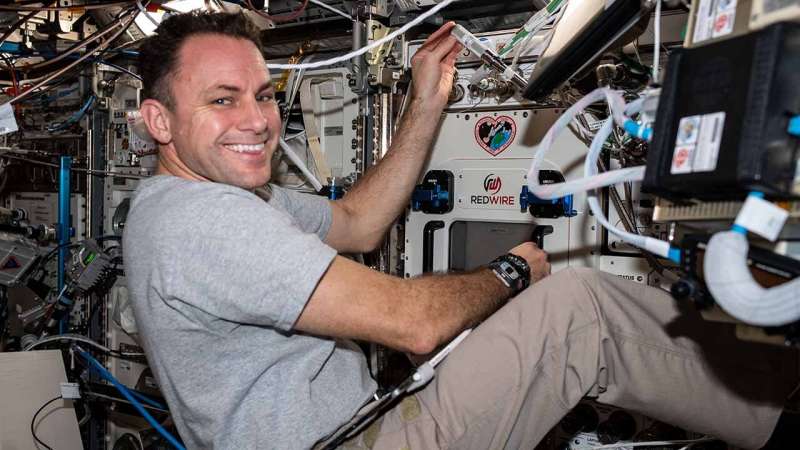
The knee is not only one of the largest and most complex joints in the body—it is also easily injured. In fact, one of the most common orthopedic injuries is the tearing of the meniscus, a half-moon-shaped piece of cartilage in the knee. Each knee has two menisci that allow the joint to move freely. Current treatments for a torn meniscus are less than ideal, involving removing or repairing the torn segment, which can ultimately lead to increased risk of arthritis or knee replacement, as the affected joint loses its cushioning.
To improve patient care on Earth and develop more effective ways of treating torn tissues, researchers from Redwire Space are turning to the microgravity environment of the International Space Station (ISS) National Laboratory.
Redwire's upgraded BioFabrication Facility (or BFF) launched to the space station in November.
Galileo saving lives – infographic
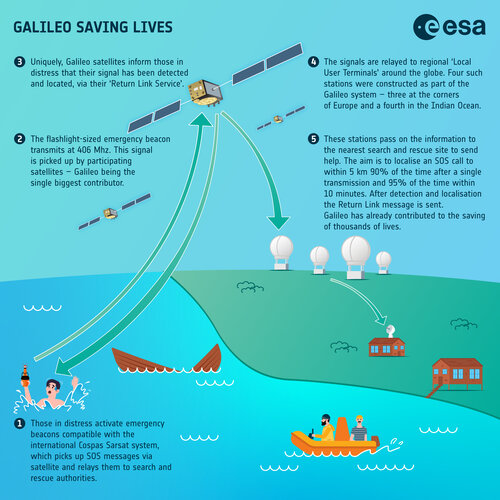 Image:
Galileo saving lives – infographic
Image:
Galileo saving lives – infographic How Galileo works - infographic
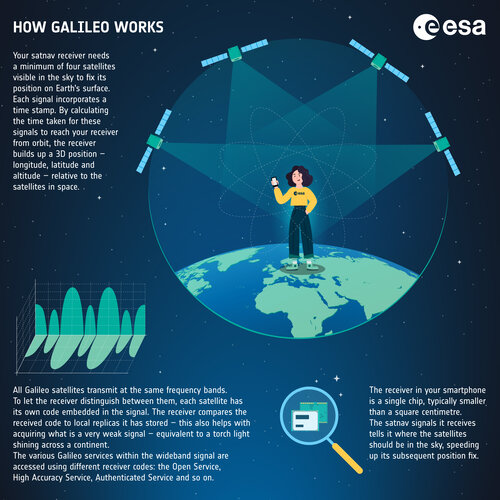 Image:
How Galileo works - infographic
Image:
How Galileo works - infographic Galileo in space – infographic
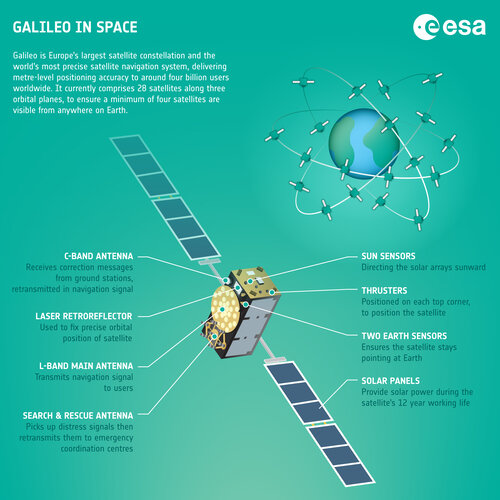 Image:
Galileo in space – infographic
Image:
Galileo in space – infographic How does Galileo help other space missions?
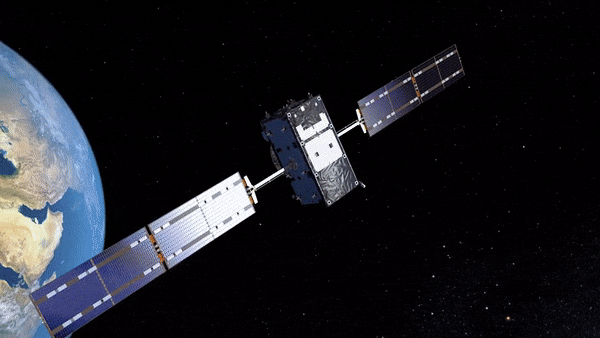
In 2023 satnav receivers are everywhere: in our phones, our cars, and drones, in fixed infrastructure, aboard boats, trains and aircraft. They are also in space: more than 95% of all the satellites in low-Earth orbit carry satnav receivers to calculate their position. The additional signals from Europe’s Galileo satellites are providing a big boost to the coverage, availability, redundancy, and accuracy of spaceborne receivers, in turn enlarging the possible scope of future missions, and extending the useful range of satnav much further out into space – to the Moon and beyond.
Ceres Imaging expands its agriculture data analytics solutions to Europe
 Ceres Imaging, the data analytics company that builds precision agriculture solutions to reduce risk and improve sustainability outcomes, is announcing its expansion into Portugal and Spain.
Ceres got its start over a decade ago in California's silicon valley area, and today helps many of the world's largest agriculture land holders detect underperforming assets and identify opportunities
Ceres Imaging, the data analytics company that builds precision agriculture solutions to reduce risk and improve sustainability outcomes, is announcing its expansion into Portugal and Spain.
Ceres got its start over a decade ago in California's silicon valley area, and today helps many of the world's largest agriculture land holders detect underperforming assets and identify opportunities Carbon Mission takes stock of CO2 emissions
 A NASA Earth-observing satellite has helped researchers track carbon dioxide emissions for more than 100 countries around the world. The pilot project offers a powerful new look at the carbon dioxide being emitted in these countries and how much of it is removed from the atmosphere by forests and other carbon-absorbing "sinks" within their borders. The findings demonstrate how space-based tools
A NASA Earth-observing satellite has helped researchers track carbon dioxide emissions for more than 100 countries around the world. The pilot project offers a powerful new look at the carbon dioxide being emitted in these countries and how much of it is removed from the atmosphere by forests and other carbon-absorbing "sinks" within their borders. The findings demonstrate how space-based tools China to launch LEO constellation of remote sensing satellites
 China Aerospace Science and Industry Corp, a major space contractor, is planning to deploy a remote-sensing satellite network in low-altitude orbits, according to a project leader.
Song Xiaoming, president of the CASIC Second Academy, said that China intends to establish a space-based, high-performance infrastructure system for global remote-sensing operations.
Remote sensing refers
China Aerospace Science and Industry Corp, a major space contractor, is planning to deploy a remote-sensing satellite network in low-altitude orbits, according to a project leader.
Song Xiaoming, president of the CASIC Second Academy, said that China intends to establish a space-based, high-performance infrastructure system for global remote-sensing operations.
Remote sensing refers Globalstar introduces Realm Cloud Mobile Device Management Platform
 Globalstar, Inc. (NYSE American: GSAT) has unveiled Realm Cloud, an agile mobile device and data management (MDM) platform designed to enable VARs and customers with all the capabilities required to solve speed-to-market needs for deploying and building customized asset tracking and telematics solutions while lowering the cost of ownership.
Designed for an ever-evolving future, Realm Cloud
Globalstar, Inc. (NYSE American: GSAT) has unveiled Realm Cloud, an agile mobile device and data management (MDM) platform designed to enable VARs and customers with all the capabilities required to solve speed-to-market needs for deploying and building customized asset tracking and telematics solutions while lowering the cost of ownership.
Designed for an ever-evolving future, Realm Cloud Maxar awards L3Harris large deployable reflectors contract
 L3Harris Technologies (NYSE: LHX) has announced a contract from Maxar Technologies to design and build reflector antennas for two geostationary communication satellites.
The two nine-meter unfurlable mesh reflector antennas will provide high-power signals and improved service quality across the satellites' coverage areas. Similar to an umbrella, the flexible architecture of the antenna mak
L3Harris Technologies (NYSE: LHX) has announced a contract from Maxar Technologies to design and build reflector antennas for two geostationary communication satellites.
The two nine-meter unfurlable mesh reflector antennas will provide high-power signals and improved service quality across the satellites' coverage areas. Similar to an umbrella, the flexible architecture of the antenna mak 